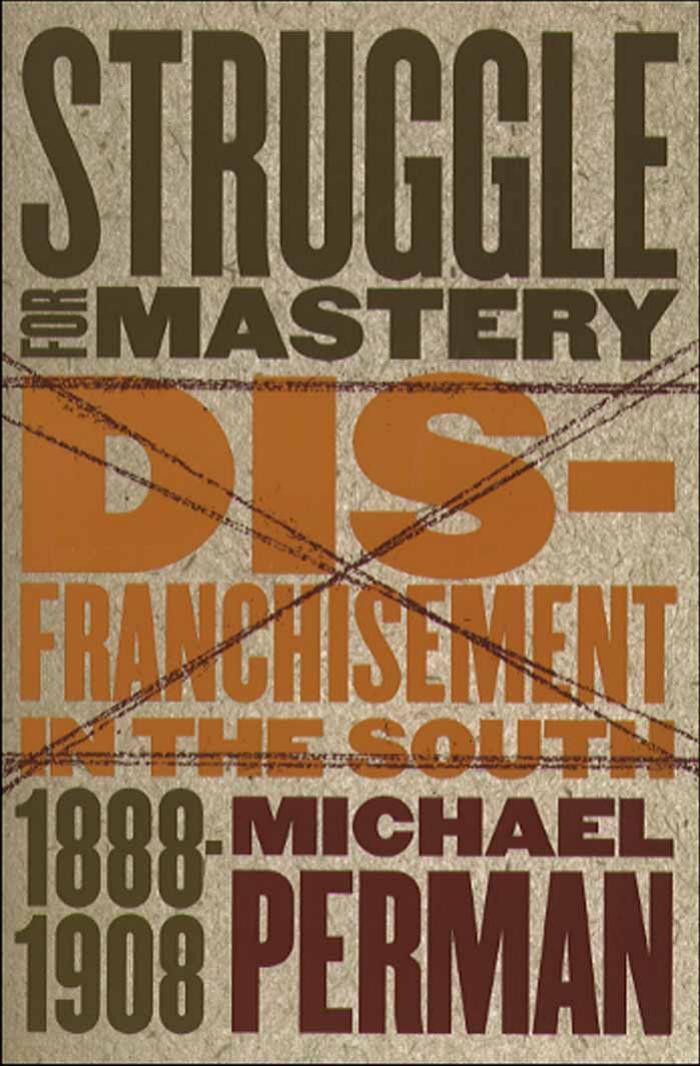Struggle for Mastery: Disfranchisement in the South, 1888-1908 by Michael Perman

Author:Michael Perman [Perman, Michael]
Language: eng
Format: epub, pdf
Tags: political science, Civil Rights, Social Science, Ethnic Studies, African American Studies
ISBN: 9780807825938
Google: RtuQQgAACAAJ
Publisher: University of North Carolina Press
Published: 2001-11-15T00:11:55.338532+00:00
Problems of the Convention
The vote in May 1900 on whether to call a convention and the election in May 1901 to choose delegates both indicated that the base of the movement to reform the stateâs governmental and electoral system was quite narrow. In the referendum vote, 77,362 endorsed the call and 60,375 opposed it. This vote was only about half of the 264,000 votes polled in the national election later that year, and it was nearly 310,000 less than the number eligible to vote.36 âThe vote cast was small,â acknowledged the Richmond Dispatch. Heavy rains on election day and the demands of tobacco planting at that time of year may have contributed to the low turnout, but still, the paper noted, âboth sides were apathetic.â37 Certainly the Martin organization made no effort to get out the vote, and the corporations were unenthusiastic. But among Republicans and African Americans, there was less activity than might have been expected in view of the disfranchising threat to poor voters, black and white. Nevertheless, more counties opposed (52) than favored (48) a convention.38 This meant that the stuffed ballot boxes of the Tidewater and the Southside carried the election statewide, along with a large turnout in the cities, which generally supported a convention.39 Besides the heavy vote in the black belt, which was obviously fraudulent, the dishonesty of the proconvention forces was also evident in the form of the ballot itself. The assembly had approved Hal Floodâs proposal that only the words âFor Conventionâ be printed on the ballot, forcing opponents to scratch it outâand only in the prescribed manner or their ballot would be thrown out. In a second desultory canvass to select delegates, held a year later in the midst of Montagueâs campaign for the Democratic nomination for governor, 88 Democrats were returned and 12 Republicans, all but 2 of whom came from the mountain areas west of the Blue Ridge. The Democratic members, whose political experience and standing had, the Dispatch liked to think, deterred opponents from running against them, included a U.S. senator, six former congressmen, and one incumbent, Flood, along with a massive body of sixty-four lawyers, most of them past or present officeholders as judges or commonwealth attorneys.40
By the time the convention assembled, this body of politically experienced and professional men was aware that sentiment was âmost crystallized,â as the Dispatch phrased it, on ânegro suffrage,â âthe paramount questionâ before them.41 Even a year earlier, the Democratic Party chair, J. Taylor Ellyson, had stated that âthe greatest of all questions to be considered by the convention is that of negro suffrage.â42 Therefore, in his presidential speech at the start of the convention, John Goode spent most of his time outlining the suffrage provisions formulated and implemented by other southern states in preparation for Virginiaâs deliberations on the issue.43 Not surprisingly, the suffrage committee was the most important committee to be formed. As evidence of its significance, Senator Daniel, the stateâs best-known and most respected public figure, rejected the offer of the conventionâs presidency in favor of chairing the suffrage committee.
Download
Struggle for Mastery: Disfranchisement in the South, 1888-1908 by Michael Perman.pdf
This site does not store any files on its server. We only index and link to content provided by other sites. Please contact the content providers to delete copyright contents if any and email us, we'll remove relevant links or contents immediately.
| Africa | Americas |
| Arctic & Antarctica | Asia |
| Australia & Oceania | Europe |
| Middle East | Russia |
| United States | World |
| Ancient Civilizations | Military |
| Historical Study & Educational Resources |
Machine Learning at Scale with H2O by Gregory Keys | David Whiting(4190)
Never by Ken Follett(3796)
Fairy Tale by Stephen King(3220)
The Man Who Died Twice by Richard Osman(2997)
Oathbringer (The Stormlight Archive, Book 3) by Brandon Sanderson(2890)
Will by Will Smith(2794)
Rationality by Steven Pinker(2291)
The Dark Hours by Michael Connelly(2246)
Can't Hurt Me: Master Your Mind and Defy the Odds - Clean Edition by David Goggins(2229)
The Dawn of Everything: A New History of Humanity by David Graeber & David Wengrow(2123)
Friends, Lovers, and the Big Terrible Thing by Matthew Perry(2123)
Principles for Dealing With the Changing World Order: Why Nations Succeed and Fail by Ray Dalio(1974)
HBR's 10 Must Reads 2022 by Harvard Business Review(1778)
A Short History of War by Jeremy Black(1763)
Go Tell the Bees That I Am Gone by Diana Gabaldon(1687)
515945210 by Unknown(1601)
A Game of Thrones (The Illustrated Edition) by George R. R. Martin(1591)
Kingdom of Ash by Maas Sarah J(1529)
443319537 by Unknown(1470)
